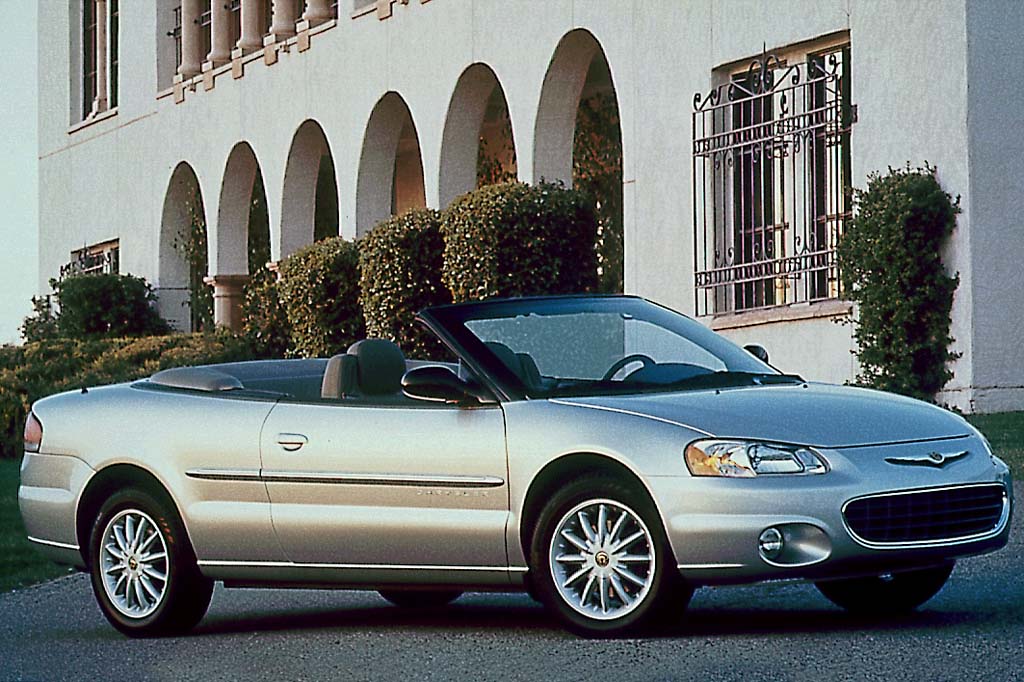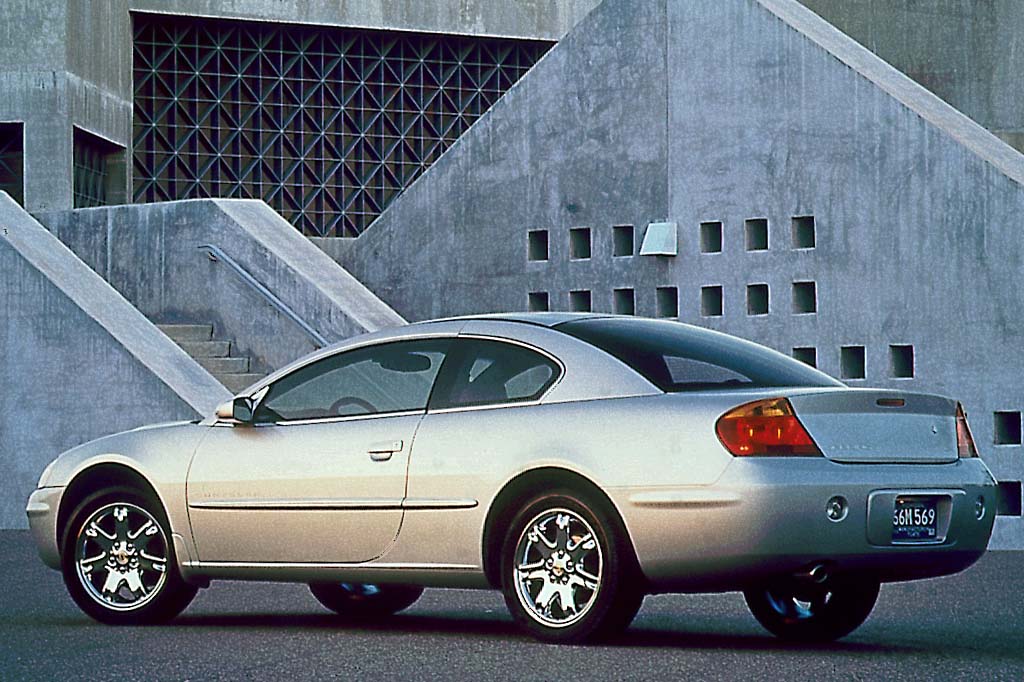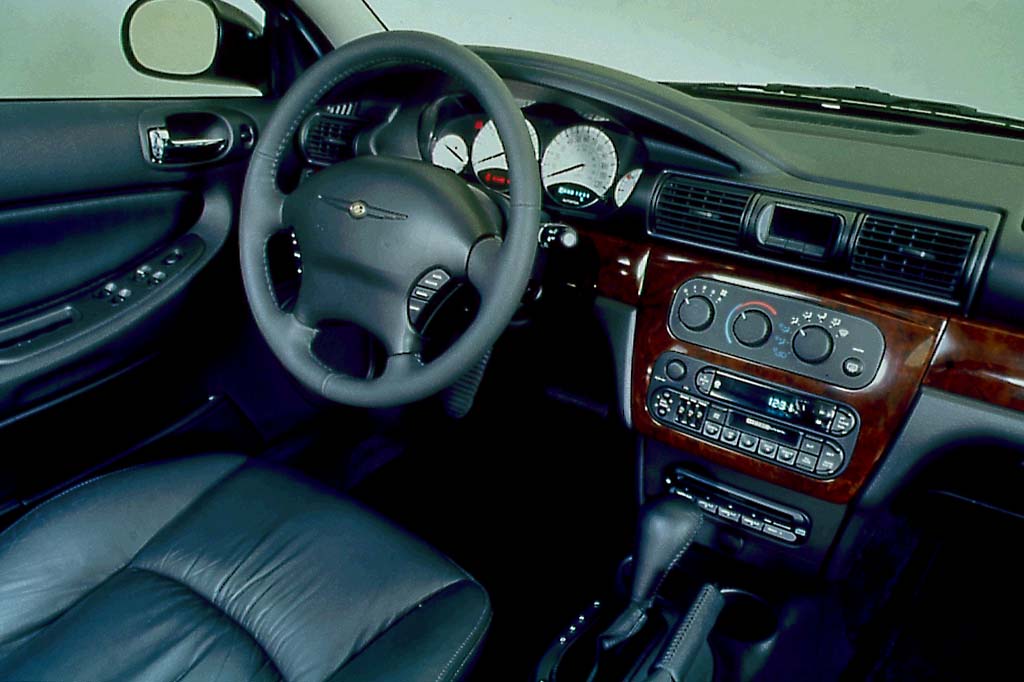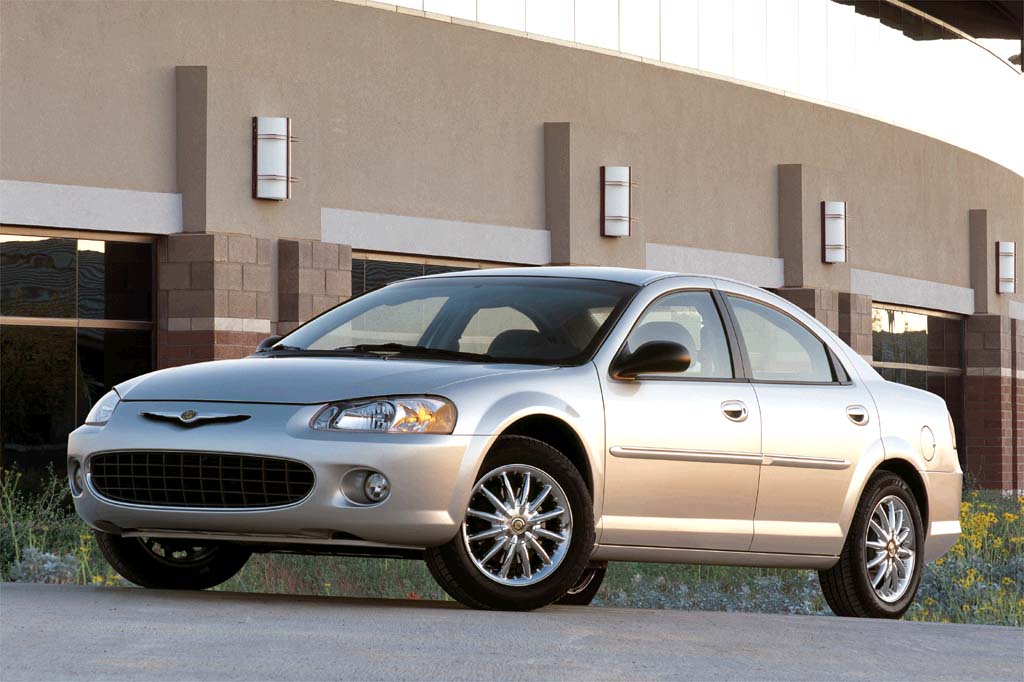| Sporty/performance car; Built in USA |
|
|
| Good condition price range: $2,000 – $7,500* |

2001 Chrysler Sebring LXi 2-door convertible

2001 Chrysler Sebring LXi 2-door coupe

2001 Chrysler Sebring interior

2002 Chrysler Sebring LXi 4-door sedan

2002 Chrysler Sebring Limited 2-door convertible
| Pros: |
|
| Cons: |
|
Despite improvements in driveline smoothness and overall refinement, the new Sebring sedans and coupes lack the polished feel of import-brand rivals. Each fulfills its purpose, and sedans are sporty-feeling family cars. While all three body styles offer competitive value, the real prize is the Sebring convertible, which is roomier than rivals and quite the pleasant cruiser.
Overview
Chrysler redesigned its midsize line, retaining the coupe and convertible but introducing a new Sebring sedan. In the previous generation, sedans were called Cirrus.
New V6 engines were available, and sedans gained side-curtain airbags. Wheelbases were unchanged, and interior dimensions grew only slightly. Chrysler claimed numerous structural changes to improve crashworthiness and reduce noise, vibration and harshness.
Coupes again shared their platform and powertrains with the Mitsubishi Galant and Eclipse. Each was built in the same Illinois factory, alongside the related Dodge Stratus (formerly called the Avenger).
The LX coupe held a 147-horsepower, 2.4-liter four-cylinder engine, while a 3.0-liter V6 rated 200 horsepower went into the LXi coupe. The V6 produced 37 more horses than its predecessor, and came with a standard five-speed manual transmission. Optional with the V6 and standard with four-cylinder coupes was a four-speed automatic. When installed in V6 models, the automatic incorporated an AutoStick feature for manual gear changes.
Sedans and convertibles, built in Michigan, again shared a Chrysler platform and powertrains. Sedans had a counterpart at Dodge, called the Stratus; but Dodge offered no convertible. A 150-horsepower, 2.4-liter four-cylinder engine went into the LX sedan, with a 2.7-liter 200-hp V6 optional. Standard in the LXi sedan, and in all convertibles, the V6 produced 32 more horses than the previous step-up engine. All models used a four-speed automatic transmission.
Convertibles came in JX, JXi, and Limited trim. A power top and heated glass rear window were standard. Power side windows automatically raised and lowered in tandem with the top.
Curtain airbags, optional in sedans, dropped from above the side windows for head protection in a side impact. Sedans, convertibles, and the LXi coupe had four-wheel disc braking. ABS was standard on the Limited convertible, unavailable on the LX coupe, and optional for all other models. Sedans and convertibles contained lower anchors for rear child seats, and an emergency release inside the trunk. Coupe and sedan headlights were said to be 25-percent brighter than before, while thicker glass was intended to improve sound insulation.
Sebrings competed against the Ford Taurus, Honda Accord and Toyota Camry sedan, as well as Toyota’s Camry Solara coupe and convertible.
Yearly Updates
| 2002 Sebring A new GTC convertible appeared during the 2002 season, fitted with V6 engine and a manual gearbox rather than the usual automatic transmission. |
| 2003 Sebring Coupes got revised exterior styling, front and rear, for 2003, as well as interior modifications that included a new dashboard. For the first time, too, coupes were available with front side airbags. |
| 2004 Sebring For 2004, Sebring sedans and convertibles got revised front styling, but coupes remained unchanged. |
| 2005 Sebring Coupes were dropped from the lineup this year, and the sedan and convertible continued on unchanged for 2005. |
| 2006 Sebring Sebring loses its coupe for 2006. |
